The City of New York is far more than a city. It’s a world. You go from one village to another and the scenes change continuously. Each one has its own distinct flavor, each one like a separate island.
The borough of Manhattan is the one of the five New York boroughs that shows the most extremes. Walking along 5th Avenue and Central Park South, I found it hard to believe that some people could actually afford the ritzy penthouses and gigantic corner apartments with huge terraces on those streets. You can well imagine from below what they are like, and the opulence is mind-boggling. The extremes of wealth in this city that we don’t even see in my country are not just amazing, but actually obscene. Compare this unbelievable luxury to the most down-trodden slum buildings in Harlem and it is hard to believe they are in the same world, the same country and the same city.
The very first time I arrived in the City it was the enormous Central Park that I found breathtakingly beautiful, but it too varies constantly as you move from one section to another one.
Central Park — is it a park? Well, it’s so much more than a park, it’s hard to say what it really is. As one writer says, “it’s an iconic, sprawling urban green space”. Just as New York City is so much more than a city, Central Park is so much more than a park.
This enormous green space stretches from 59th Street in the south with the Zoo in the southeast corner, past huge playing fields, wood-like walkways and rocky hills, past many ponds and lakes. And, alongside one of the lakes, there are the statues of Hans Christian Anderson reaching out to the ugly duckling and of Alice in Wonderland with the rabbit and the Mad Hatter – my favorites among all the various statues in the park. You continue up north on a long walk and when you get to Bethesda Fountain, you are amazed by the enormous crowds of people, beatniks, hippies and others. You feel you have come a long way but you haven’t even reached the center of the park.
__________________
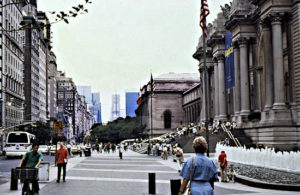
The entrance to the magnificent Metropolitan Museum of Art on 5th Avenue and at the edge of Central Park in the lower 80s.
The Metropolitan Museum of Art is one of the world’s largest and finest art museums. It is set around 80th Street at the edge of this enormous green space which is Central Park. You can come back again and again to this amazingly rich museum. There is everything – from Tiffany glass windows to Renaissance paintings and to the temple of Dendur from about 15 BCE which was a gift from Egypt in 1968. It was their thanks for the support from the U.S. to save Egyptian monuments that would have been flooded by the construction of the Aswan dam.
On our visit to the Metropolitan Museum in 1989 we mainly visited the American Wing, but there is so much to be seen in this museum that you can spend a day in the Greek and Roman art section alone, another day in the Renaissance art section – fabulous Rembrandt paintings, among other Dutch and Flemish art – and yet another day in the more modern art section, impressionist and post-impressionist, just to mention a few major departments. We clearly also visited the Egyptian Art department, since we saw the Temple of Dendur.
Across 5th Avenue on the east side and a bit higher up, on 89th Street, is Frank Lloyd Wright’s modern architectural masterpiece, the Solomon Guggenheim Museum. The museum was largely expanded and renovated from 1990 – 1992. When it reopened, the space open to the public had increased enormously An eight-story annex had been added and the exterior is not white any more but a distinguished beige.1
“The Guggenheim” displays art that was initially the private collection of mining tycoon Solomon G. Guggenheim and it keeps growing. It is the permanent home to a vast and varied collection of works from Impressionism to Contemporary Art.
________________
Up at the northern end of Central Park there is a pond that is called the Harlem Meer, from the days when Harlem was the home of relatively well-to-do Dutch immigrants. Harlem with its extremely varied history begins at 96th Street and reaches up north through Washington Heights with Columbia University and up to where Harlem River leaves the Hudson. Its area is defined by the Hudson River in the west and the Harlem River in the east.
Now we are in a different world. Even though some charming old buildings from earlier and wealthier days are still around, the street views are generally anything but up-scale. Mostly it looks drab. Poverty is screaming at you from the facades of the buildings and from the sad sights of dirt and decay. On coming in on the New Haven railroad from New Rochelle, the train passes through a long stretch of Harlem and the sights of abandoned buildings, empty windows with no glass, empty streets and generally run-down sights give the impression of a city emptied after a war or after an enormous city-wide riot.
After the 17th century when Harlem was founded by Dutch settlers as a farming village, it went through multiple stages, all of them more or less well-to-do.2 It became the home for Jewish and Italian immigrants, a center for African-American culture and later a ghetto. Harlem has gone through periods of luxury apartment houses, row-houses and tenements.
Harlem is of course today totally incorporated with New York City, which was not the case a couple of hundred years ago. Today there are subway express trains that make it a totally different world from the days of the “New York and Harlem Railroad” or even the great improvement of the elevated trains in the late 19th century. The one that lasted the longest ran from the downtown City Hall along 3rd Avenue and up to Harlem River. It only closed in 1955. But those trains were slow. When I lived in the New York City area in the sixties you could still see the elevated tracks of the ‘El’ on 3rd Avenue. The last of those tracks were dismantled in 2005. An era is gone.
When my great friend Andy (the American in Paris) first settled in New York City, in the early sixties, as a musician from Athens, Georgia, he happened to ask a policeman one day how he would get to Harlem. He will never forget how the cop replied “Take the A-train”. Yes, it’s not only in the song that you take the A-train, the quickest way to get to Harlem. It’s not just Duke Ellington and Ella Fitzgerald who tell you to take the A-train, it’s cops too.
Harlem was once an ideal place to live with wide tree-lined avenues and up-to-date housing where more or less affluent African-Americans were migrating in flocks from run-down areas downtown, from a run-down area on the West Side, and from the rural south.
The decline of Harlem began after World War I when the demand on housing was rapidly increasing and landlords, black and white, became corrupt, as was to be expected. They raised rents without spending money on necessary maintenance and soon lots of unlucky people were living in tenements without heat or hot water.
These impressions of the city are over 50 years or so out-of-date and so things may well have changed since then — for better or for worse. Wikipedia says: “In the 21st century, crime rates decreased significantly, and Harlem started to gentrify.”
In the sixties, we white people did not hesitate to go to Harlem nightclubs and jazz clubs. From that time on it became almost a taboo for Whites to dare set foot in what had become increasingly a black ghetto.
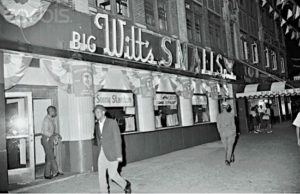
Big Wilt’s Smalls Paradise on 7th Avenue and 135th Street; Source
I went to Harlem with my friend Bo in the spring of 1965 and a small group of her friends. We went to Smalls Paradise on 135th Street and 7th Avenue. At the time this famous nightclub was no more owned by Ed Smalls. He had sold it to the basketball hero Wilt Chamberlain who had renamed it “Big Wilt’s Smalls Paradis”. Wilt Chamberlain was a leading member of the famous Harlem Globetrotters.
Like most unthinking Whites, all we were out to get was having a good time, dancing, eating a bit and listening to good dance music, but we were no doubt also a bit thrilled to get a look at the “exotic” African-American world.
Rebellions in black neighborhoods became particularly scary with the Watts, L.A. riots in August 1965. One city after the other was burning in the hot summers and Whites got frightened and stayed away. However, on hot days in any slum areas, west side or east side, uptown or downtown, you saw kids who somehow managed to open up fire hydrants and shower themselves, running around, screaming laughing and thumbing their noses at authority and Whitey who might come very soon to put an end to their fun.
_________________
At the opposite, southern tip of Manhattan, from Battery Park, you can see the Statue of Liberty and Ellis Island and maybe also one of the ferries going to Staten Island. The view is a marvel. On a clear day, which may be rare in New York City, you may even be able to glimpse the Verrazano-Narrows Bridge which all shipping has to go under on the way into New York Harbor. This stunning masterpiece of engineering was opened just a couple of months after I arrived in New York City, in the late summer of 1964.
A very memorable incident comes to my mind. In the summer of 1966 when I had decided to take a group of American young girls on an 8-week tour of Europe, we were going over to Europe on the luxury liner, leFrance, no less. I arrived with my suitcases at Grand Central Station and got a taxi to take me crosstown to the French Line on pier 88 on the Hudson at 44th Street. It was the only time I went by an ocean liner to or from the U.S.
The cab driver was listening to a gorgeous violin concerto on his radio. There were radios in those days, not CD players. Those were also the days when cab drivers spoke English and were very often Jewish and musicians or intellectuals. I said something about the gorgeous music which I recognized well. Was he trying to figure out which violin concerto it was? He said No it was clearly Beethoven, but he was trying to find out who the violinist was. Might it be Isaac Stern? Or would it rather be Yehusi Menuhin?
Unforgettable. I bet I tipped him well.
_____________
Going over to the parts of Manhattan that we Whities know better than Harlem, let’s first go to Chinatown with its own Chinese population. People from all over New York Ciry love to go to one of the wonderful restaurants in Mott Street or thereabouts, even though you have to bring your own beer, usually bought at a store next to the restaurant. There are excellent Chinese restaurants on the Upper East Side too, but Chinatown is Chinatown. And it’s much cheaper.
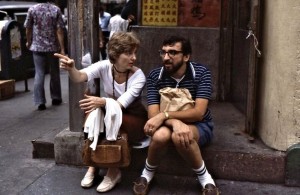
Ted and Siv waiting for Bella and Roy for dinner in Chinatown. Ted has the beer cans in a brown bag on his lap.(1979)
Little Italy, which is directly north of Chinatown, is another village that originally had a very specific ethnic background, but it has changed its population in a very different way from Chinatown.
‘Lower East side’, a vague concept, but generally thought of as the lower southeastern part of Manhattan is another ever-changing neighborhood. Its western border is usually considered to be the notorious Bowery where homeless could be seen at any time of the day, sitting, lying, standing – awake or asleep. If awake and standing, they are often equipped with a rag and a spray bottle of water and they insist on washing your windows as soon as you stop your car at a red light.
The lower East side too has a long and varied history, but it was generally the home for recent immigrants. In my days it was thought of as the home of poor Jews, and before that it was poor immigrants of various nationalities. It had probably already started to be “gentrified” with modern apartment blocks and shopping malls, but prejudice dies hard. On driving through that area on your way to Brooklyn Bridge close to the East River, you definitely get an impression of run-down blocks of housing and potholed streets. For that matter, as far as I can remember, potholed streets in my days were all over the downtown and even the midtown neighborhoods. No wonder half of New York taxi cabs had totally broken suspension. That may all have changed completely today. Even in my days I remember seeing modern high-rises, a fair number of them, in that area.
However, what most people very likely think of when they hear the name of New York City and Manhattan may well be the hyper-modern glass-walled skyscrapers all along mid-town 6th Avenue, Park Avenue (e.g. the Seagram Building,) and elsewhere.
When I first arrived in New York, the reconstruction of 6th Avenue, also called The Avenue of the Americas, was under way and the street was covered in immensely heavy wooden boards that boomed, clunk clunk, as you drove over them. The reconstruction went on for many years, and one day,in the late sixties, as if a miracle had happened overnight, 6th Avenue finally appeared in its transformed glass-walled glory. Stunning, if that’s what you like to see in NYC. In fact I remember myself saying on John’s and my last visit to the City that I wanted to put my feet on 6th Avenue to really feel that I had been to New York City.
Also, there had been, long before my time, the 6th Avenue El-train. I saw the remains of the 3rd Avenue El-train, but never the 6th Avenue El. Quote from Wikipedia — “Demolition of the Sixth Avenue elevated railway resulted in accelerated commercial development of the avenue in Midtown. Beginning in the 1960s, the avenue was entirely rebuilt above 42nd Street as an all-but-uninterrupted avenue of corporate headquarters housed in glass slab towers of International Modernist style.”
Traffic on the avenues then was like a herd of cars, ignoring lanes and anything behind them.
I will never forget one afternoon shortly before Christmas, when Allyn and I had probably been shopping in midtown Manhattan, along with a million other people, and we were trying to make our way back on one of the wide uptown-going avenues to our usual route back to Westchester via West Side Highway along the Hudson River. We were totally locked into an ocean of cars, yellow cabs and private cars. It seemed as if we were never going to get a chance to move anywhere at all. Finally Allyn, I don’t know how, managed to turn off the avenue, by a miracle, and we did ultimately get over to the West Side and the Hudson.
This was very reminiscent of getting stuck on West Side Highway after having been out on town with half the rest of the civilized world. You stopped and moved and stopped and moved and once in a while Allyn said Hey, we’re in second. Yes, we had a stick-shift car. We may have been the only one! Getting back home after a show was always an exercise in patience.
________________
Greenwich Village lies south of Washington Square, which is surrounded by New York University. “The Village” was long ago the home of bohemian people, artists, writers and other intellectuals, young and old. And maybe it still is, at higher rents for sure. In Washington Square you will always see mostly old men play chess or checkers. Young men in my days played with Frisbees and once in a while there would be a gathering of saffron-robed Hare Krishna cultists.
Once in India, Tamil Nadu, we had a wonderful guide, Raja, who liked to sing and dance. He was absolutely exceptional. Once, since he liked to sing, I sang a bit of the song I heard in those days “Hare Krishna, Hare Krishna, Hare Krishna, Hare hare…” Raja gave me a big smile and complimented me on my singing, which is really very modest. But it sounded like the kind of songs he would sing himself, so he was appreciative.
East Village right next-door, is the home of famous and numerous nightclubs. I once had the misfortune of going to a most horrible nightclub in the East Village with Allyn and a very good friend of mine, Göran, a graphics artist from Stockholm. He was in NYC for an exhibit of his down in Greenwich Village, but the funniest thing is how we met in huge New York City. My uncle Gösta was also in town because of an exhibit of his own, an exhibit called ‘Live in Wood’ (‘Leva I trä’), an exhibition of Swedish wood art, mostly for practical purposes. It was organized by the Smithsonian Institution. Gösta was one of the three exhibited artists, so these two Swedes of different generations happened to be in NYC at the same time. Allyn and I were moving around the ‘Live in Wood’ exhibit when I suddenly saw a red-haired and bearded man who looked distinctly familiar bent over a small wooden work of art. I could hardly believe my eyes and I just said ‘Göran’! He stood up and it was indeed he. He said ‘Siv’ and we were both equally dumbfounded. I doubt if he even knew I had moved to New York. Göran is (was, alas, since he died a few years ago) married to one of my best friends from my youth, Gerd Lindman, now Gerd Lindman Nilsson, who was probably the brightest girl in our group of naive young girls. Gerd was also an artist but became best known for her extraordinary weaving (daldräll).
Gösta’s beautiful wooden bowls, dishes and boards for eating and serving from, were sold by Georg Jensen, the Danish jeweler and luxury store, on Madison Avenue. When I found out from Gösta himself that that was the case, I went to see what I could find by him. I found a huge round dish almost 50 cm in diameter and slightly bowl-shaped. It was simply gorgeous. Gösta used beech wood that he had immersed in water with bacteria which “damaged” the wood and gave it a pattern of darker veins. I looked at the price. Inflation has gone so fast since the mid-sixties that I am not sure I remember the price correctly since it doesn’t seem as exorbitant to me today as it did then. I believe it was $500. But when I mentioned it to Gösta, he said that precisely, they sold his things at such inflated prices that he was infuriated, knowing how little of those astronomical sums he himself received. So he had told them he would stop dealing with them.
Göran and a friend of his exhibited their graphics in a kind of loft in Greenwich village, so we had to move around a bit that day. I love his graphics and he once later, back in Sweden and Dalarna, on gave me a book with prints of his work combined with poems written by a friend of his.
In those days you could usually find a parking place in the streets, which is why we always took my little VW Beetle to go to the City. But that changed quite a few years before I left the City and to my great anger I once got a parking ticket in midtown New York when I had parked my little VW in a side street for ten minutes or so to get tickets for a show of French theater for me and my students. A $30 ticket it was! I was furious and I tried to contest it. Of course it did not work. They lowered the fine by $5. Big deal. I remember because I was in Paris on my one-year sabbatical leave when I got the reply.
That evening Göran, Allyn and I had decided to go “on the town” and my uncle Gösta, although far from young any more, was more than willing to come along. First we went to this unforgettably horrible nightclub in the East Village, just noise and non-stop multicolored lights sweeping over the stage area and the gigantic room. There was no good old-fashioned jazz, but awfully loud hard rock.
We left after our first drink and went to Greenwich Village to find a more jazz-club kind of place. Allyn suggested one and it was quite good. We thought however that Gösta was certainly going to give up and go back to his hotel when we decided to leave the huge and noisy nightclub. But my uncle was not ready for bed. He wanted to live it up in New York City.
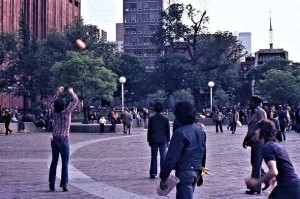
Frisbee players on Washington Square, whcih is surrounded by the numerous New York City University buildings. (1973)
The evening was not too bad after all and it had certainly been a wonderful surprise to suddenly stand face-to-face with an old and a very good friend from Stockholm.
Since Greenwich Village became famous for its bohemian style of living, it was not surprising that nightclubs, restaurants and bars started mushrooming, and money was flowing into the area. Real estate agents took the clue and started building huge luxury buildings. New Greenwich Village has absolutely nothing in common with the old Greenwich Village streets like Bleecker Street with its wonderful old Bleecker Street cinema, where Allyn and I were frequent visitors.
And off-off-Broadway theaters like “Circle in the Square” where we once went to see our young friend Tony Schwab in a pretty good play (“Seven Days of Mourning”). Bleecker Street cinema had (and they still did a couple of decades later when John and I looked in at the now seedy-looking foyer) a repertory where you could find the best art films ever, Swedish, Italian, French or British.
New Greenwich Village is just a stone’s throw away from the fairly run-down old village. The contrast is stark. Even famous sculptures can be seen in this very posh new village, which was already there in the sixties. There is a monolithic Picasso sculpture at La Guardia Plaza for the rich and nouveau riche to bathe in the glory of expensive cubism that tickles their feeling of self-importance.
Another area in the City that is strictly for the well-to-do is of course the Manhattan East Side, and more especially so what is called the Upper East Side. Buildings with doormen where nobody is allowed into the building without the doorman having checked with the resident you have come to see. A marquee over the sidewalk with the number of the building indicates high class. Frequently there is also a big lobby downstairs for visitors to lounge in. Streets lined with not very old trees are common in these elegant side streets. Restaurants and bars can be seen, even though more commonly on the avenues, but barely any stores. This is up-scale living, and it is not for commerce. My friend Bo moved from up-town 64th Street to 21st Street when she decided she would prefer having a studio by herself. I never noticed any difference in the level of luxury, but rents may well be a bit lower as you get closer to the downtown area.
_______________
North of the fashionable ‘Upper East Side’ is another ethnic village, German this time, Yorkville, where you find central European type delicatessens that make you feel as if you had landed on another continent.
However, I doubt if all these formerly ethnic villages have kept very much of the original type of population. Chinatown – yes, but Little Italy has long since lost its mostly Italian population and the same is probably true for Yorkville.
On the west side is Chelsea, a very pleasant neighborhood for people who are not choosy about an east side street address. I had a friend, generally called Kelly since she didn’t like her first name who lived on West 23rd Street and she loved her neighborhood. Here you have little European-type stores and you could easily believe you were in an old-world city. Higher up, on the west side of Manhattan is West Central Park with its old beautiful brownstone buildings, a predominantly Jewish residential area, at least in my days – until Harlem takes over. My former colleague and friend Bella lived there with her roommate Esther and that’s where she had the party where I once again met with my most beloved junior class from Mount Vernon High School. Those students had now graduated and Bella was throwing a party for them and for Norma and me with our mates.
On the West Side in the mid-60s and Columbus Avenue there is the grand “Lincoln Center for the Performing Arts”. The center is composed of a large square plaza with a monumental fountain. In the back center is the world-famous Metropolitan Opera, which moved from West 39th Street in 1966, two years after I got to know the City. On the left side is the New York State Theater, which is home to both the New York City Ballet and the New York City Opera.
On the right is Avery Fisher Hall, formerly called the New York Philharmonic Hall. Set in the back on the right is also the Vivian Beaumont Theater, not to be forgotten, behind a colossal and beautiful Henry Moore sculpture.
Allyn and I saw many memorable plays at that theater. In the back there is also the extraordinary architectural structure of the very prestigious Juilliard School of music.
Another noteworthy area is 42nd Street that goes from Grand Central Station to Times Square, notorious at least at one time for its prostitution, especially its beautiful ‘queens’. It’s at Times Square that 42nd Street cuts across Broadway.
Old Times Square with the Times building at the southern end and its myriad of colorful blinking lights as you look up north was truly fascinating. It has degraded seriously since the 1960s though, and also the general look has changed since the old Times building was replaced by a very modern-looking Allied Chemical tower during the years I lived there. 3 This is the beginning of Broadway, probably the best-known theater district in the world.
Continued: Chapter 17– New York City Theater
- “In 1992 an extension of the museum was carried out, which was conducted by Gwathmey Siegel & Associates . Siegel resisted the temptation of seeking notoriety and added a simple block next to the sculptural museum, a rectangular, almost blind box with small slots by way of windows, which contains more than 4700 m2 of additional exhibition area and 1400 m2 of office area, which allows the Wright building to be exclusively dedicated to the galleries. The connection with the old building is done through a glass wall. ↩
- History of Harlem “The advent of new and better forms of transportation, as well as the rapidly increasing population of New York following the Civil War brought about the transformation of Harlem into a middle and upper-middle class neighborhood. Although the New York and Harlem Railroad had operated from lower Manhattan to Harlem beginning in 1837, service was poor and unreliable and the trip was long. The impetus for new residential development in this area came with the arrival of three lines of elevated rail service which, by 1881, ran as far north as 129th Street, and by 1886 extended further north.” ↩
- “From the 1960s to the early 1990s, the seediness of the area, especially due to its go-go bars, sex shops, and adult theaters, became an infamous symbol of the city’s decline.” (Wikipedia) ↩


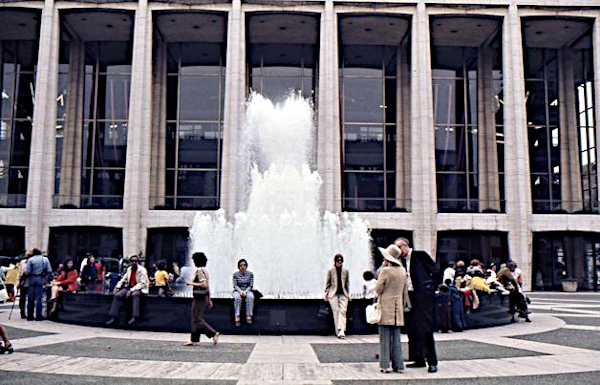
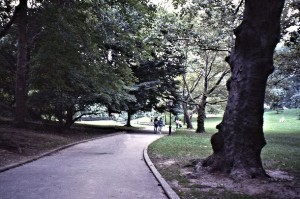














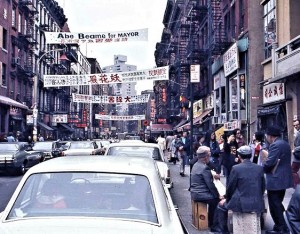
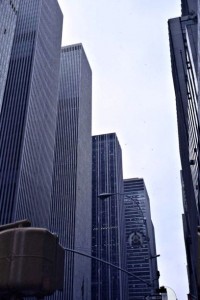
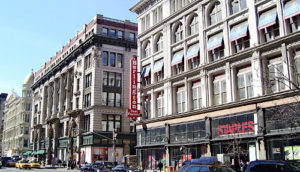
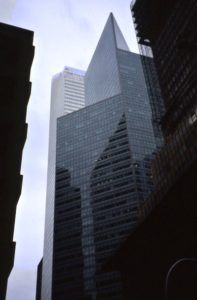
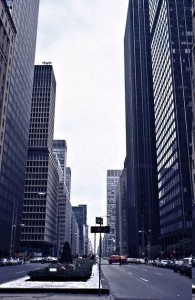
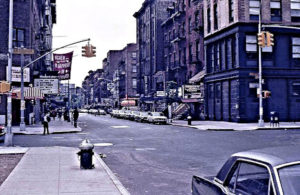
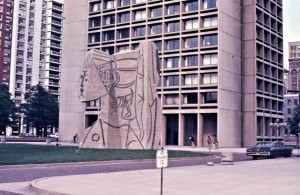
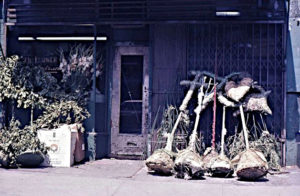
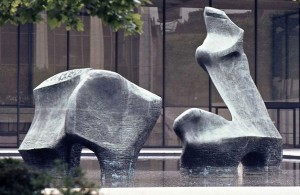




This is once again a lovely piece of writing that details the essential differences between the best-known districts of New York City with beautiful photos you took of these places. I like the way you bring in facts about the past as you describe these sights that are a “must” for tourists who really want to understand this metropolis.
Moreover, we hear about your uncle Gösta, who exhibited his fine art work in wood at the Smithsonian Institution as well as your own experiences back in the sixties. This chapter will definitely make more people wish to visit the Big Apple, just like other chapter give us a desire to discover or rediscover Sweden.
Dear Marianne, I am so very pleased that you liked this chapter too. And thank you so much for saying so. I was maybe a little bit worried that I was laying it on too thick with all the facts and all the pictures. You reassure me. Big thanks!
Pingback: Sketches from the Life of a Wandering Swede | Siv’s sketches from her life